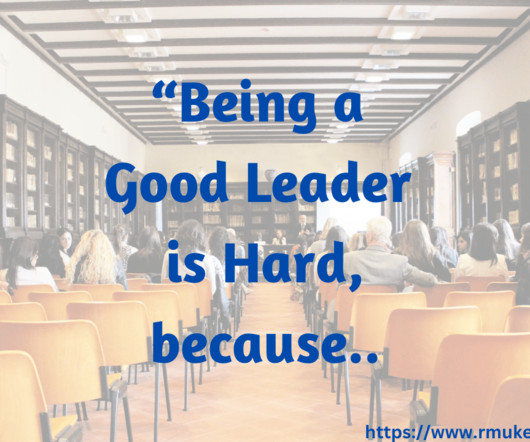What to Do When Your Team Blames You
Harvard Business Review
APRIL 12, 2024
When you’re a manager, at some point, regardless of how the circumstances arise, your team will blame you for something that’s making them unhappy, whether you have control over it or not. Being accused by your team of failing them in some way induces a threat state in your brain, impairing your ability to think clearly and triggering a variety of cognitive distortions and defensive behaviors.





























Let's personalize your content